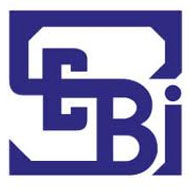What top-tier PE firms can teach public companies about creating and sustaining value over time.
Companies are in business to create value for their stakeholders, a pursuit that occupies countless hours in boardrooms and executive suites around the world. A select number of companies get it right — they set the correct value creation course and sustain it over time. But many do not. Some companies cannot find the right strategic path; others cannot execute their strategy. Still others execute well for a while but then lose their way. And another group of organizations become so exhausted by rounds of business transformation (that is, cost cutting) that they lack the stamina to search for additional ways to secure and sustain value.
For public companies, these challenges are intensified by quarterly reporting requirements, governance rules meant to drive accountability and transparency, and the demands of a vastly larger and more vocal group of stakeholders. Private equity firms, however, enjoy a number of natural advantages when it comes to building efficient, high-growth businesses, including a built-in platform for change (for example, a predetermined exit within 10 years), tightly aligned ownership and compensation models, and fewer institutional loyalties and competing distractions. But despite these distinctions, the best practices of top-tier PE firms still provide powerful and broadly applicable lessons. Public companies can adapt the following seven imperatives from private equity to build a value creation regimen.
1. Focus relentlessly on value. To attract continued investment from limited partners and earn the generous fees for which they are renowned, private equity firms have to maintain a laser-like focus on value creation, beyond simple financial engineering and severe cost cutting. More and more PE deals feature substantive operational improvements that result from the application of deep industry and functional expertise. Private equity firms are in the trenches at their portfolio companies, investing in core operations as often as they are cutting extraneous costs.
Private equity firms’ focus on core value begins with due diligence. General partners carefully choose each target company and explicitly define how they will create incremental value and by when. This assessment does not stop after the acquisition — they periodically evaluate the value creation potential of their portfolio companies and quickly exit those that are flagging to free up funds for more remunerative investments.
That can often mean exiting entire lines of business that are not drawing on the company’s core strengths and differentiating capabilities. Public companies should try to apply a similarly objective and dispassionate lens to their portfolio of businesses by assessing first their financial performance, and then the degree to which each employs mutually reinforcing capabilities that cross business unit lines and distinguish the enterprise as a whole.
2. Remember that cash is king. Private equity firms typically finance 60 to 80 percent of an acquisition with debt. This high-leverage model instills a focus and sense of urgency in PE firms to liberate and generate cash as expeditiously as possible. To improve cash flow, PE firms tightly manage their receivables and payables, reduce their inventories, and scrutinize discretionary expenses. To preserve cash, they delay or altogether cancel lower-value discretionary projects or expenses, investing only in those initiatives and resources (including talent) that contribute significant value.
Public companies can take a page from the PE playbook and develop a similar performance improvement plan. Although the specifics will vary from company to company, any such plan will focus on increasing profits and improving capital efficiency.
Public company leaders should start with a blank slate and then objectively and systematically rebuild the company’s cost structure, justifying every expense and resource. First, management needs to categorize each activity as “must have” (it fulfills a legal, regulatory, or fiduciary requirement, or is required to “keep the lights on”), “smart to have” (it provides differentiating capabilities that allow the company to outperform its competitors), or “nice to have” (everything else). The next step is to eliminate low-value, discretionary work. And the final step is to optimize the remaining high-value or mandatory work.
3. Operate as though time is money. Consistent with the imperative to generate cash quickly to pay down debt is the mantra among private equity firms that “time is money.” There is a bias for action captured most vividly in the 100-day program that PE firms invariably impose on portfolio companies during the first few months of ownership. PE firms have little appetite for the socialization and consensus building common at many large public companies — private equity firms and their management teams feel a sense of urgency and rapidly make decisions to change.
Granted, portfolio company executives are extraordinarily empowered and have close working relationships with their actively involved boards. They do not need to navigate layers of oversight or appease external stakeholders. Still, public company executives could learn a lot from the private equity firm’s need for speed. Waiting carries an opportunity cost that too many public companies inadvertently and unfortunately pay.
4. Apply a long-term lens. Private equity firms act with speed but without forsaking rigorous analysis and thoughtful debate. They typically have three to five years to invest their fund, providing time to carefully assess potential targets and develop an investment thesis. PE firms then have a window of about 10 years to exit these deals and return the proceeds to investors. Despite the occasional claim to the contrary, PE firms do not tend to “flip” investments.
After realizing the short-term cost benefit of eliminating low-value activities, the general partners can afford to invest in the long-term value creation potential of the companies they acquire. In fact, that is the only way they will secure their targeted returns upon exit — by convincing a buyer that they have positioned the company for future growth and profitability.
The best private equity firms not only cut costs but also invest in the highest-potential ideas for creating core value. The art and science of making these judicious choices is a capability that public companies can develop.
5. Assemble the right team. PE general partners intuitively understand that strong, effective leadership is critical to the success of their investment — in fact, they sometimes invest in a company based on the strength of its management talent. The assessment of talent begins as soon as due diligence commences and intensifies after closing. Once decisions are made, they are swiftly executed. One-third of portfolio company CEOs exit in the first 100 days, and two-thirds are replaced during the first four years. A private equity firm will act assertively to put the right CEO and management team in place, and may well draw on its own in-house experts or external network to fill talent gaps.
Talent management continues beyond the first few months after the acquisition and extends well beyond the C-suite. Pressured to do more with less, PE firms must continually reassess individuals in middle as well as top management positions and quickly remove or replace low performers. These same talent management tenets can apply to public companies.
6. Link pay and performance. The CEO and senior managers at a private equity portfolio company are deeply invested in the performance of their business — their fortunes soar when the business succeeds and suffer when it fails to achieve objectives. PE firms pay modest base salaries to their portfolio company managers, but add in highly variable and annual bonuses based on company and individual performance, plus a long-term incentive compensation package tied to the returns realized upon exit. This package typically takes the form of stock and options, which can be generous, especially for CEOs. A 2009 study in the Journal of Economic Perspectives of 43 leveraged buyouts pegged the median CEO’s stake in the equity upside at 5.4 percent, whereas the management team collectively received 16 percent of company stock.
Top managers receive their annual performance bonus only if they achieve a handful of aggressive but realistic performance targets, unlike bonuses at public companies, which have become an expected part of overall compensation irrespective of performance. PE firms will reduce or even eliminate bonus payments if an operating company fails to achieve its targets.
Not only does management participate in the upside in a private equity operating company, but it also shares in the potential downside. CEOs and certain direct reports have real “skin in the game” in the form of a meaningful equity investment in the acquired company. Because this equity is essentially illiquid until the PE firm sells the company, it reinforces the alignment between top management’s agenda and that of the PE shareholders, reducing any temptation to manipulate short-term performance.
Although public companies may not be able to match the equity-based rewards of a successful PE venture, they can create a tighter link between management pay and performance, particularly over the long term. Companies can stimulate a high-performance culture by strengthening their individual performance measures and incentives to align them with true value creation. The first step is to reform the performance review process so that it truly distinguishes and rewards star talent.
7. Select stretch goals. As discussed, top private equity firms manage their portfolio companies by developing and paying rigorous attention to a select set of key and customized metrics. PE general partners quickly assess what matters in driving the success of an acquired company and then isolate these few measures and track them. They set clear, aggressive targets in a few critical areas and tie management compensation directly to those targets. PE firms watch cash more closely than earnings as a true barometer of financial performance and prefer to calculate return on invested capital rather than fuzzier measures such as return on capital employed.
Many public companies are already following the private equity example by developing “dashboards” that track the key measures of business performance and longer-term value creation. Ideally, companies want to create a virtuous circle of performance measurement and management. The vision and long-term strategy should drive a set of specific initiatives with explicit objectives. These initiatives and their financial implications should, in turn, drive annual plans and budgets.
There are reasons that those who can afford the extravagant management fees continue to invest in private equity — the evidence shows that the best of these firms create economic value again and again, by implementing real and sustainable operating and productivity improvements at their portfolio companies. Although public companies do not enjoy certain liberties that highly concentrated private ownership affords, their boards and executives can learn from the better practices of PE firms, adapting them to the realities and constraints of their own business model to create additional and lasting value.





